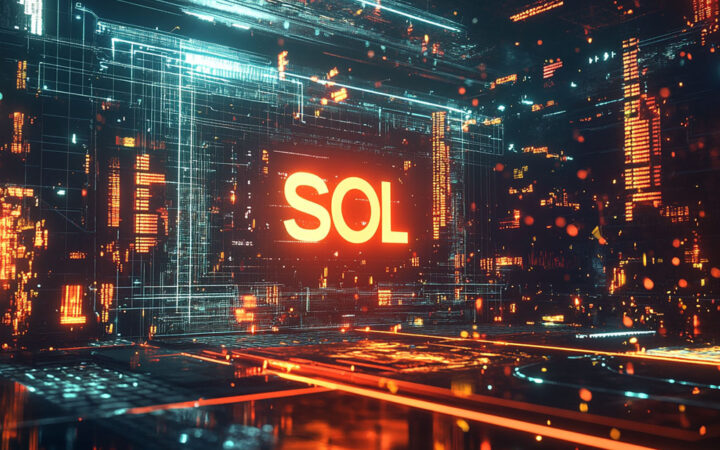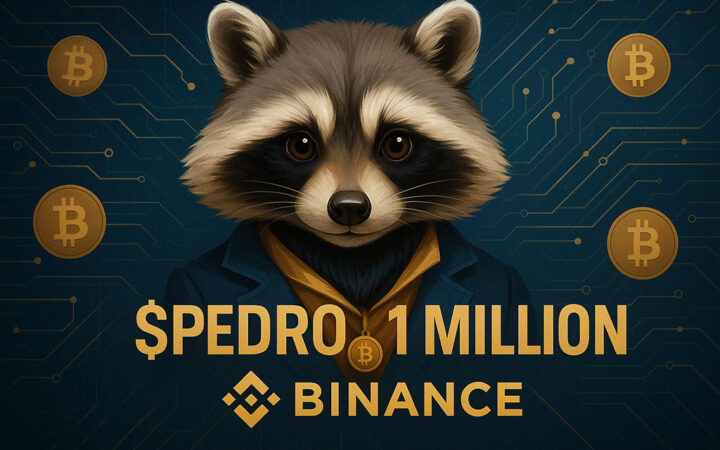
The Future of Asset Tokenization: Market Potential

Fascinated to learn about how asset tokenization works and what future opportunities lie in wait for it? In our guide, we take you through how the technology works, how people have profited from it, and the prevailing trends.
A busy Italian painter in Florence hums softly as Black Mirror plays in the background while she works on transforming masterpieces into decentralized digital assets.
Each fragment, a token on a blockchain, finds a home in faraway cities like Tokyo, Toronto, and Eureka. For this artist, geography poses no barrier as her art can skip borders in seconds, and her sales revenue promptly floods in.
That is the vision behind asset tokenization, a decentralized finance (DeFi) concept that promises to usher in a world where skyscrapers, songs, minerals, and even niche assets like intellectual property rights can be collectively owned and traded in real-time.
Let’s focus on how this quiet revolution has been reshaping markets and its potential has consequently escaped beyond human imagination.
What Is Asset Tokenization?
At its core, tokenization is the nuanced art of turning an asset’s value into code.
It fragments assets, such as real estate, stocks, art, carbon credits, and other value-based commodities, into individual digital tokens that represent a share of ownership. These tokens live on blockchains, immutable ledgers that track every transaction.
Asset tokenization represents a transformation of ownership. Tokenizing value-bound assets creates accessibility by tearing down the gates of guarded financial systems.
Here is a real-world example of asset tokenization. Imagine a world where a $10 million Manhattan loft becomes 10,000 tokens, each valued at $1,000. When that happens, a teacher can invest in this project by buying one token, owning 0.01% of a building she will never visit, but which she can nevertheless earn rent from.
That is the magic of asset tokenization. The smart contracts that run this system can automate dividends, resales, and governance, thus turning assets into dynamic digital financial tools. The Maclear project 8lends, for instance, allows investors to crowd-invest in different projects and borrowers to obtain much-needed loans with a lower entry threshold.
Key Asset Tokenization Components
Here are some major components of asset tokenization.
Blockchain platforms
These include Ethereum, Solana, and Polkadot. They serve as digital land registries.
Smart contracts
Such contracts control rights and rewards, smart contracts function similarly to a self-executing notary.
Regulatory tech
RegTech encompasses tools that ensure compliance across borders, like Chainalysis for anti-money laundering.
Interoperability
This refers to the ease of transferring tokens between blockchains, much like LEGO bricks can snap into DeFi protocols.
Marketplaces
OpenSea, RealT, Coinbase, and other comparable platforms are examples of sites where assets are traded around the clock.
The Evolution of Token Assets
Tokens have been used for a long time. The ancient Mesopotamians tokenized grain harvests on clay tablets. In the 1600s, shares of the Dutch East India Company were traded much like modern stocks. However, blockchain is also built upon this idea.
Here is a brief history of blockchain’s development since 2017:
- 2017: The first tokenized real estate project, a 30-million-dollar Aspen resort, sells shares on Ethereum.
- 2021: Beeple’s digital art sells for $69M as an NFT, proving even pixels can hold monumental value.
- 2023: A Chilean vineyard tokenizes its harvest by letting global investors bet on the year’s Malbec.
Democratizing Finance
Tokenization has numerous explored and unexplored benefits. Some of them are:
- Financial inclusion: A street vendor in Jakarta can invest $10 in a tokenized skyscraper.
- Liquidity unleashed: You can sell a tokenized vintage wine collection in mere minutes.
- Transparency: Every transaction chain links to the other to form and complete a single blockchain.
- Fractional ownership: For example, you can own a sliver of a Picasso or a patent that promises to change the future.
- Global access: Thanks to tokenization, you can buy and sell real estate in Tokyo, New York, Singapore, etc., at 2 AM while lying in bed.
Market Potential for Asset Tokenization
Here are the biggest trends shaping the future of DeFi as asset tokenization takes center stage.
Wall Street’s Quiet Revolution
When a 9.4 trillion-dollar asset manager BlackRock registers for a tokenized fund, people usually pay attention. To bridge the gap between TradFi and cryptocurrency, industry titans like BlackRock and Fidelity started tokenizing real-world assets (RWAs) in 2024, including bonds, real estate, and private equity.
However, this goes beyond simply digitizing outdated processes; it also entails revising liquidity rules.
- The RWA gold rush: Imagine a BlackRock-tokenized municipal bond fund where a retail investor in Lagos owned a slice of New York infrastructure debt. Institutions are racing to tokenize illiquid assets, unlocking trillions in “trapped” value. JPMorgan’s Onyx division already settles a billion dollars daily in tokenized collateral.
- Why it’s seismic: Tokenization slashes settlement times from days to seconds. A Fidelity tokenized money market fund could let users redeem shares 24/7, bypassing the archaic “T+2” wait. For pension funds, this means hedging risk in real-time. For you, it means access to assets once reserved solely for the top 1%.
In a fun twist, even Sotheby’s has started tokenizing fine art, a fact that allows people from all walks of life to own 0.001% of a Basquiat painting.
AI as an Algorithmic Alchemist
AI is not just forecasting markets; it is rebuilding them. By 2026, machine learning algorithms will be able to scour global data to find assets that are ready to be tokenized.
- Predictive tokenization: AI applications for evaluating IoT data, social sentiment, and satellite imagery were first used by startups like TokenIQ. In the future, AI systems might detect a spike in EV sales, which could lead to a Chilean lithium mine being tokenized.
- AI could create self-updating tokens with dynamic NFTs. A Costa Rican tokenized forest, for instance, can change its value in response to alarms about illicit logging or real-time carbon capture data.
- Imagine an AI bot that rebalances your tokenized assets while you’re asleep. This is known as a portfolio cyborg. Because it detected a shortage in supply, it exchanges your tokenized Tesla stock for tokenized uranium futures. Now, that future has become conceivable.
Space Assets: The Final DeFi Frontier
Forget condos on Mars; let’s talk about asteroid mining revenues. By 2030, lunar land rights, satellite bandwidth, and space debris cleanup contracts might all be tokenized by forward-thinking firms like SpaceX and Blue Origin.
One significant development to anticipate in the tokenization of space assets is the potential for Moondust dividends. The idea that a DAO may tokenize a helium-3 mining enterprise on the Moon is not out of the question once we become an interplanetary species.
Satellite-as-a-Service may also become a thing, as businesses like Starlink may tokenize the bandwidth of their satellites.
DeFi Fusion: Gold, Yields, and the Art of Alchemy
Gold has been a store of value for millennia. Today, such precious models and other valuable assets serve as collateral for DAI loans.
Protocols like 8lends accept tokenized assets as collateral to back DeFI loans, blending ancient and modern wealth. If you’d like to take out a loan with little headache for your business or profit from an advanced DeFi lending project, don’t hesitate to check out which opportunities await you.
The World as a Mosaic of Tokens
Not only does tokenization break down boundaries, but it also dissolves them. It transforms your Netflix binge into token yields, moondust into smart contracts, and skyscrapers into blockchains.
The future of DeFi and asset tokenization is like a hybrid of a Borges tale and a Bloomberg terminal: endless, linked, and unavoidably strange.
As the poet William Blake once observed, “The road of excess leads to the palace of wisdom.” Yes, there may be many hazards, such as cyber threats and regulatory outbursts, but there is a silver lining.
Disclaimer: This publication is sponsored. Coinspeaker does not endorse or assume responsibility for the content, accuracy, quality, advertising, products, or other materials on this web page. Readers are advised to conduct their own research before engaging with any company mentioned. Please note that the featured information is not intended as, and shall not be understood or construed as legal, tax, investment, financial, or other advice. Nothing contained on this web page constitutes a solicitation, recommendation, endorsement, or offer by Coinspeaker or any third party service provider to buy or sell any cryptoassets or other financial instruments. Crypto assets are a high-risk investment. You should consider whether you understand the possibility of losing money due to leverage. None of the material should be considered as investment advice. Coinspeaker shall not be held liable, directly or indirectly, for any damages or losses arising from the use or reliance on any content, goods, or services featured on this web page.







